Support
We are here to support you, feel free to contact us or check out our BIM files or our technical informations.
Dundalk, Co. Louth
Scullion Architects
2016 – 2018
Photographs – copyright and courtesy of Aisling McCoy, except Girl in Meadow by Declan Scullion
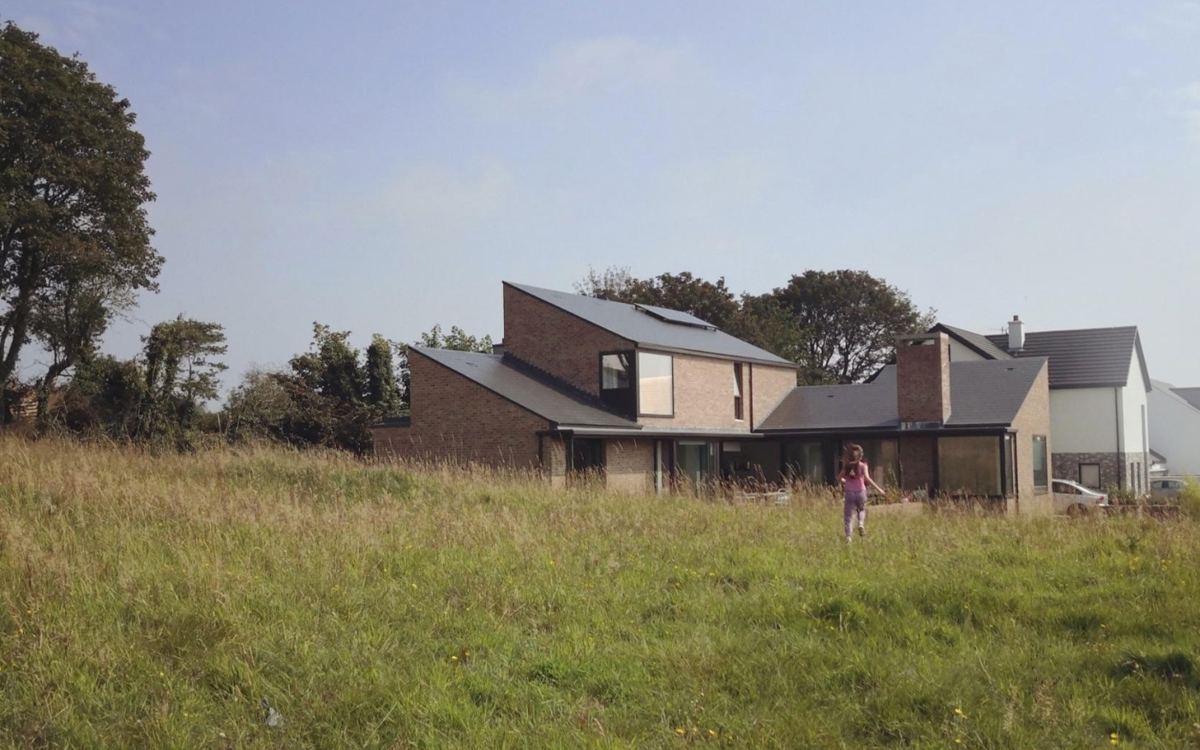
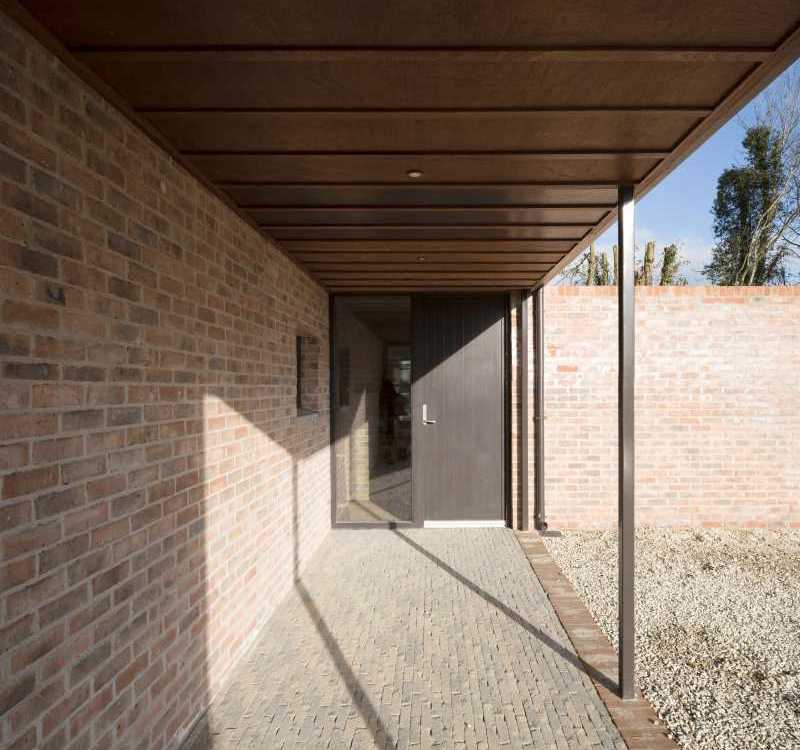
The plot at the end of a proposed cul-de-sac of individual houses on farmland outside Dundalk had two great features: a large meadow off to the side and a stand of trees behind. Other than that there was no context to speak of; no masterplan, only a free-for-all of known unknowns, apart from the meadow, which had been sterilised – preserved in perpetuity – under the grant of planning permission.
What was an architect, winding up for his all-important first new build – with all that means for any practice – to do? Even a hugely experienced architect, who had been taught by Andy McMillan and Isi Metzstein in Glasgow before working for Kennedy Fitzgerald in Belfast, Cullen Payne (where Robert Payne was “another great teacher”) in Dublin, David Chipperfield (the Hepworth Gallery at Wakefield) and Bennetts (the Royal Shakespeare Theatre at Stratford-upon-Avon) in London, as well as McCullough Mulvin (Athlone IT School of Engineering, the Long Room Hub in Trinity College and the Carnegie Library in Dun Laoghaire) after returning to Dublin. Where to start?
In architecture, there are many triggers. Declan Scullion thought of a painting: Andrew Wyeth’s ‘Christina’s World’, an icon of American art painted in 1948 that hangs in the Museum of Modern Art in New York. In the painting, a young woman, who appears on second glance be crawling across a meadow, looks towards a house on the horizon that seems out of reach. Anna Christina Olson (1893–1968) was a disabled neighbour of Wyeth’s in Cushing, Maine, where he had a summer home. The figure is a composite of the middle-aged Christina and Wyeth’s younger wife Betsy.
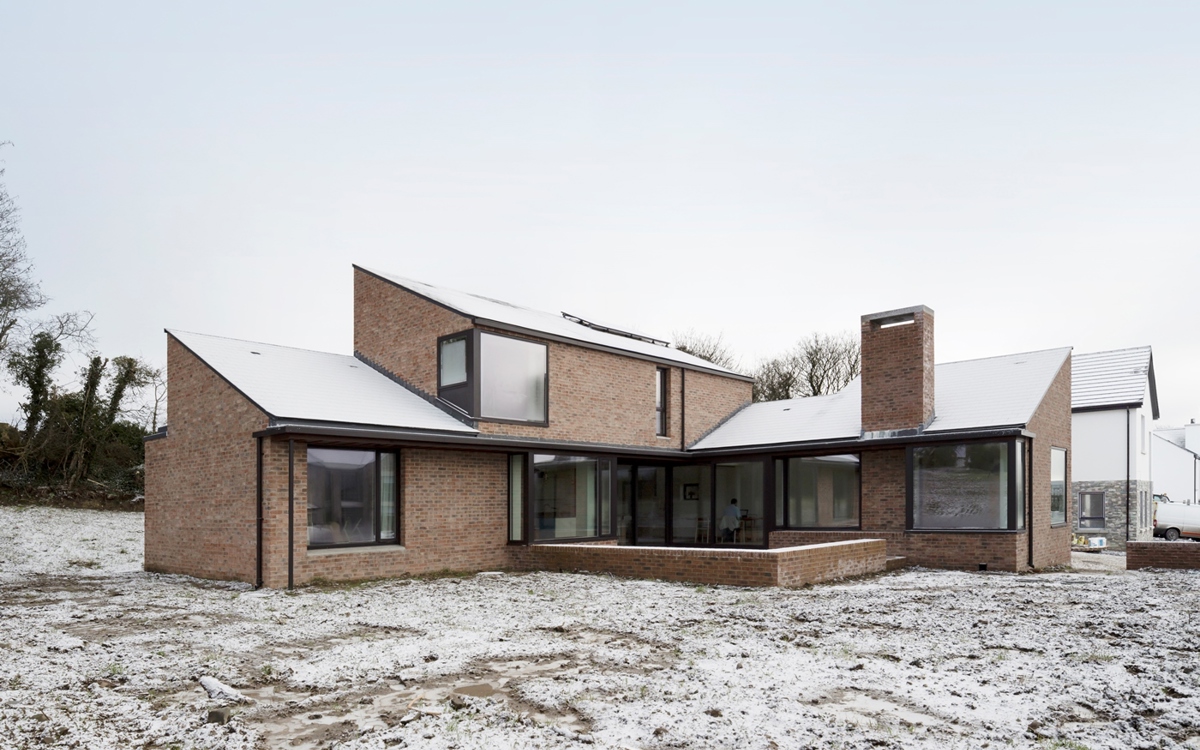
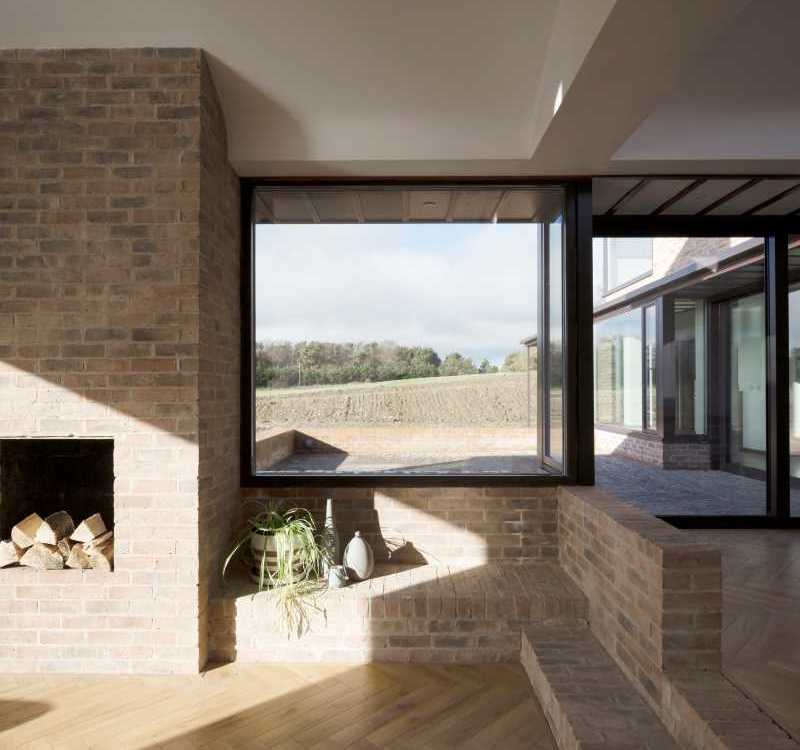
The image provides a potentially rich and intriguing psychological starting point for a project between suburbia and nature. Is his interest merely pictorial, or is Scullion wistful that his site is really rather constrained, offering only a glimpse of the open landscape of Wyeth’s world? Is he perhaps thinking into the future, and how this ideal new world may yet evolve over time for his clients, a retired couple? Or does he even imagine himself the poor creature in the field who has been waiting so long for this very project to come within reach? Who can know, but in his own photograph the next generation (also dressed in pink) is running free in the meadow … and home is not so far away. At Blackrock, there is no intermediate ground between house and meadow.
Nor is the house gothic, grey and foreboding, as in Wyeth’s painting. It is happy and sunny, with a convivial low-walled patio nestled between inward sloping roofs, warm brick walls, a beacon chimney and a corner window that surveils the meadow, keeping it safe. Scullion says the house is made of brick because Dundalk is a redbrick town, but here the brick paving, flush-struck mortar joints and stained cedar soffits reveal another, more pertinent, inspiration: Jørn Utzon’s Kingo Houses in Helsingør, Denmark (1958). Utzon described his L-shaped brick houses as like “flowers on the branch of a cherry tree, each turning towards the sun.”
Here too. “The plan is orientated around the sun,” Scullion says, “so it is a solar house in that sense.” The radical consequence of giving primacy to orientation is that the patio is brought almost to the front of the site, facing south and west. Privacy is afforded, just – and ambiguity avoided between what is front and what is back – by dramatically scaling up the almost blank east elevation, while welcoming visitors under a long, low, skinny loggia leading to the hall door in the crook of the plan.
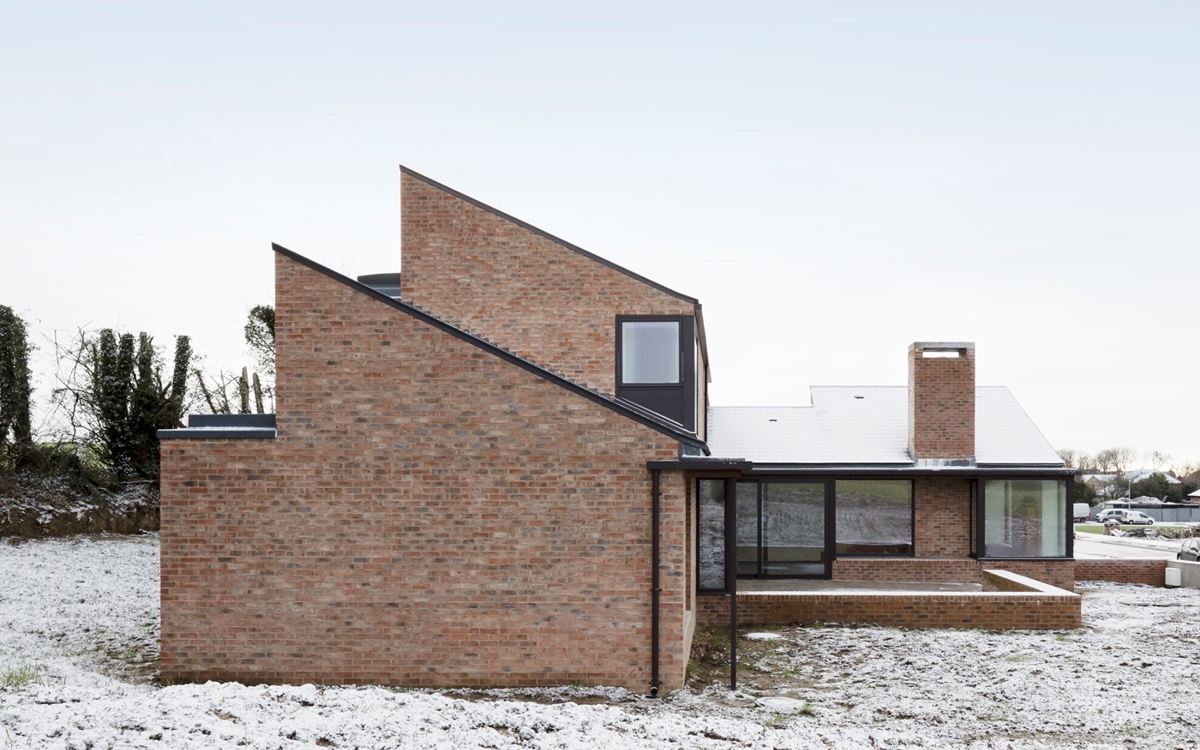
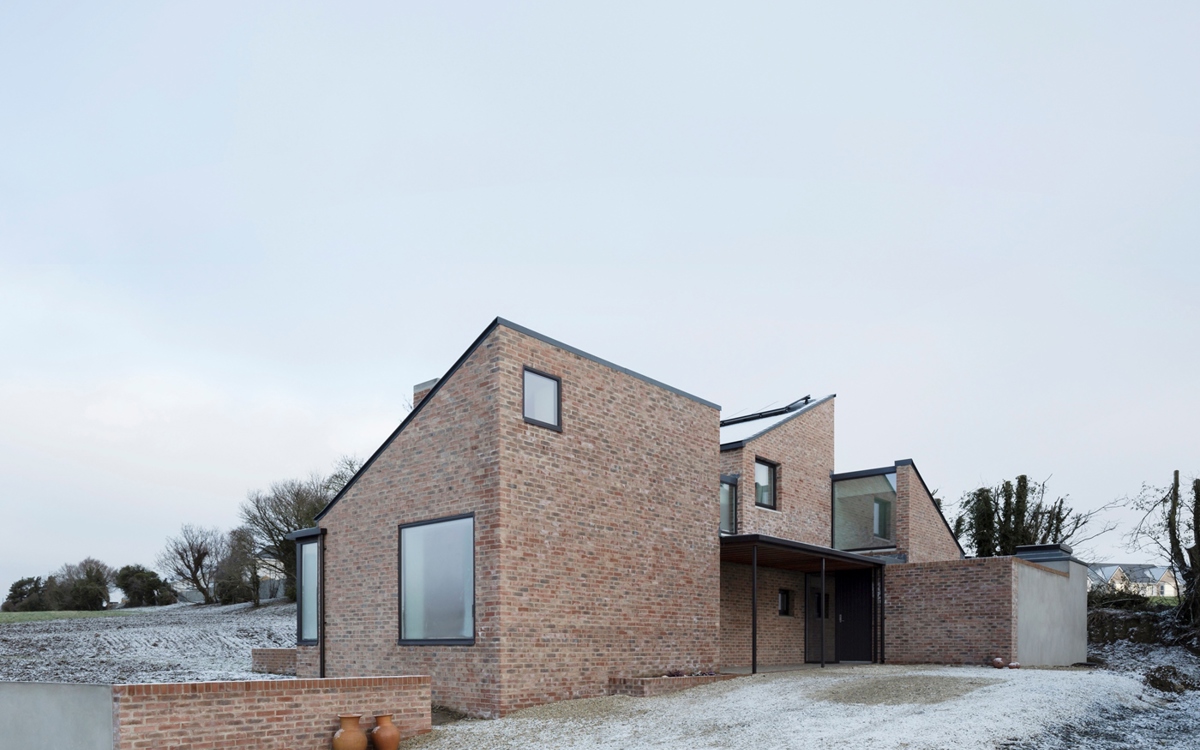
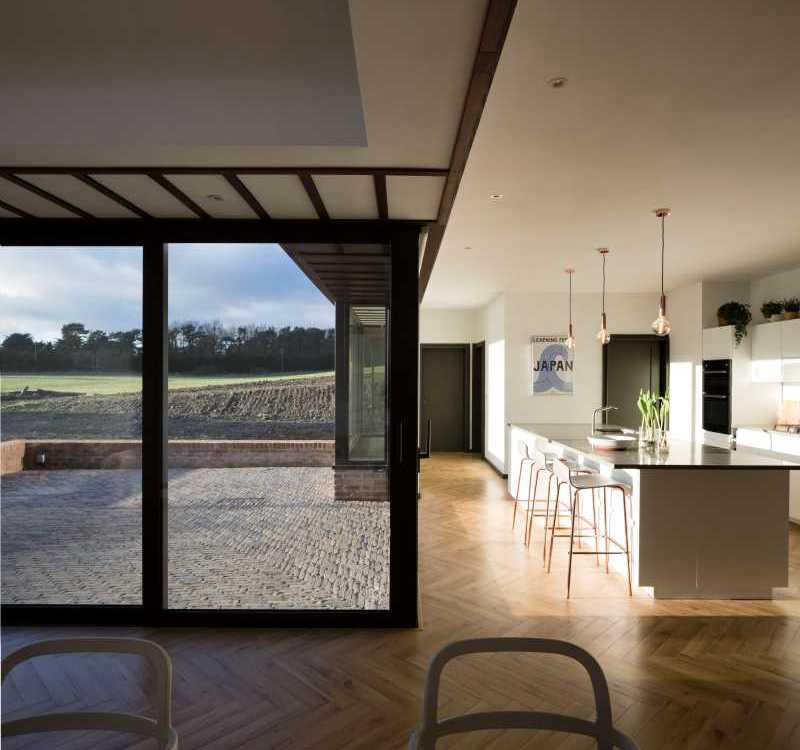
The house has a precise, geometric presence, amplified by taut, flush panes of glass and extremely crisp roof details, “to tighten the wildness of the meadow,” Scullion says. “I wanted to use fibre cement slates for their planar quality. They give a sheer flatness to the roof that natural slates wouldn’t have.” The verge is particularly sleek, thanks to the use of aluminium trims. There is a clear stand-off gap between the photovoltaic cells and the slates. I ask about the customised gutters. “At Chipperfield’s, we went to extraordinary lengths to hide gutters and downpipes,” he says. “Instead, I wanted to work with folding a piece of metal and looking at how it meets the ground, so the rainwater pipes and columns have the same dimensions. The gutter is 200x80. I originally had it at 300x80, but the engineer said the snow load would be too great. I’ve always been an architect who thrives on site. I love the making of it,” he says, adding that he comes from a long line of labourers, chippies and sparks from mid-Ulster, in rural Tyrone.
Despite all its careful, sharp precision, there is also a softness to the house that comes, I think, from its rootedness in the earth and a restrained decorative instinct in some of the detailing. There is no plinth. The brick rises out of the earth. The living room is set down into the ground. [I ask about mobility concerns and am reassured that the floor can easily be raised if ever that is required.] There is a brick chimney in the room; you can see around it to the meadow. The patio perimeter has been moulded and shaped to bring down the scale and form an ‘engawa’ space along the edge. The deep brick bench, sometimes inside, sometimes outside, is thermally broken. The patio expands the sense of space in the rooms surrounding it, which also enjoy morning clerestory light, another borrowing from the Kingo Houses, but here the light is also softened and stretched by rolling the ceiling gently into the wall, as at Utzon’s later Bagsværd Church (1976).
And the little hints at decoration? “Oh, the laths? They come from that Gottfried Semper idea of implying structure – it’s Semper via Sergison Bates. Robert Payne is friendly with Jonathan Sergison. I like to be relaxed about it.” Deservedly so, after such a fine debut. Declan Scullion is up and running.